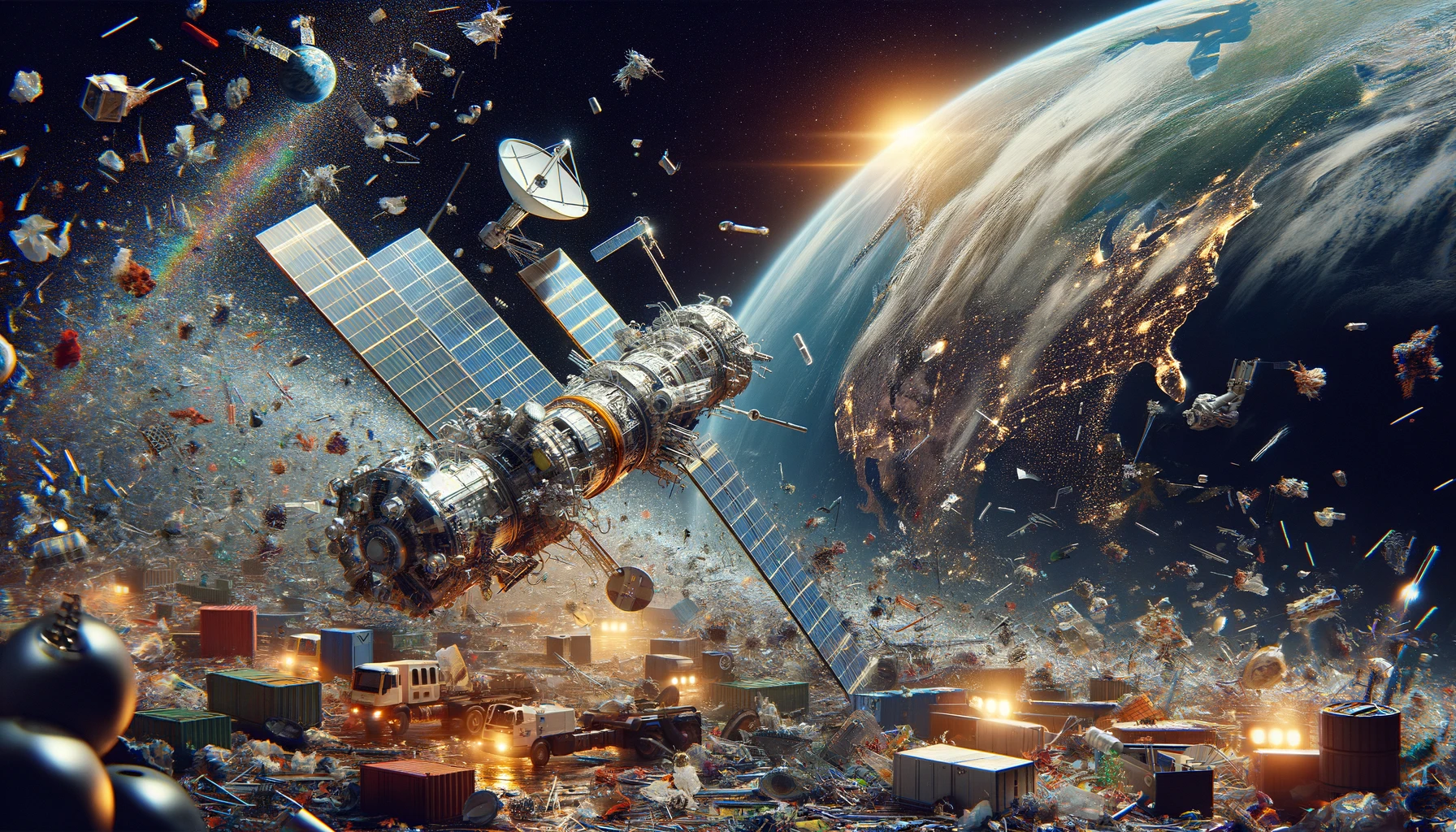
Protecting Earth's Orbital Environment
Advanced AI-Powered Debris Removal Systems for a Sustainable Space Future
Space Junk Removal Division
Safeguarding Our Orbital Environment for Future Generations

Space Dust Industries is at the forefront of orbital debris mitigation, developing cutting-edge technologies to address one of the most pressing challenges in space exploration. Our comprehensive approach combines artificial intelligence, advanced materials, and innovative capture mechanisms to remove dangerous debris from Earth's orbit, ensuring the long-term sustainability of space activities for all nations.
With over 130 million pieces of debris currently orbiting Earth at speeds up to 17,500 mph, the risk to operational satellites and human spaceflight has reached critical levels. Even tiny fragments can cause catastrophic damage due to their extreme velocities. Our mission is to deploy autonomous systems that can identify, track, capture, and safely de-orbit space debris of all sizes, from paint flecks to defunct satellites.
The issue of space debris has emerged as a pressing concern, particularly in Earth's orbit, where a growing population of defunct satellites, discarded rocket stages, and fragments pose an escalating threat. As our reliance on space-based technology and infrastructure continues to expand, so too does the urgency of mitigating these risks. Our commitment to developing cutting-edge solutions represents not just a business opportunity, but a responsibility to preserve the space environment for future generations.
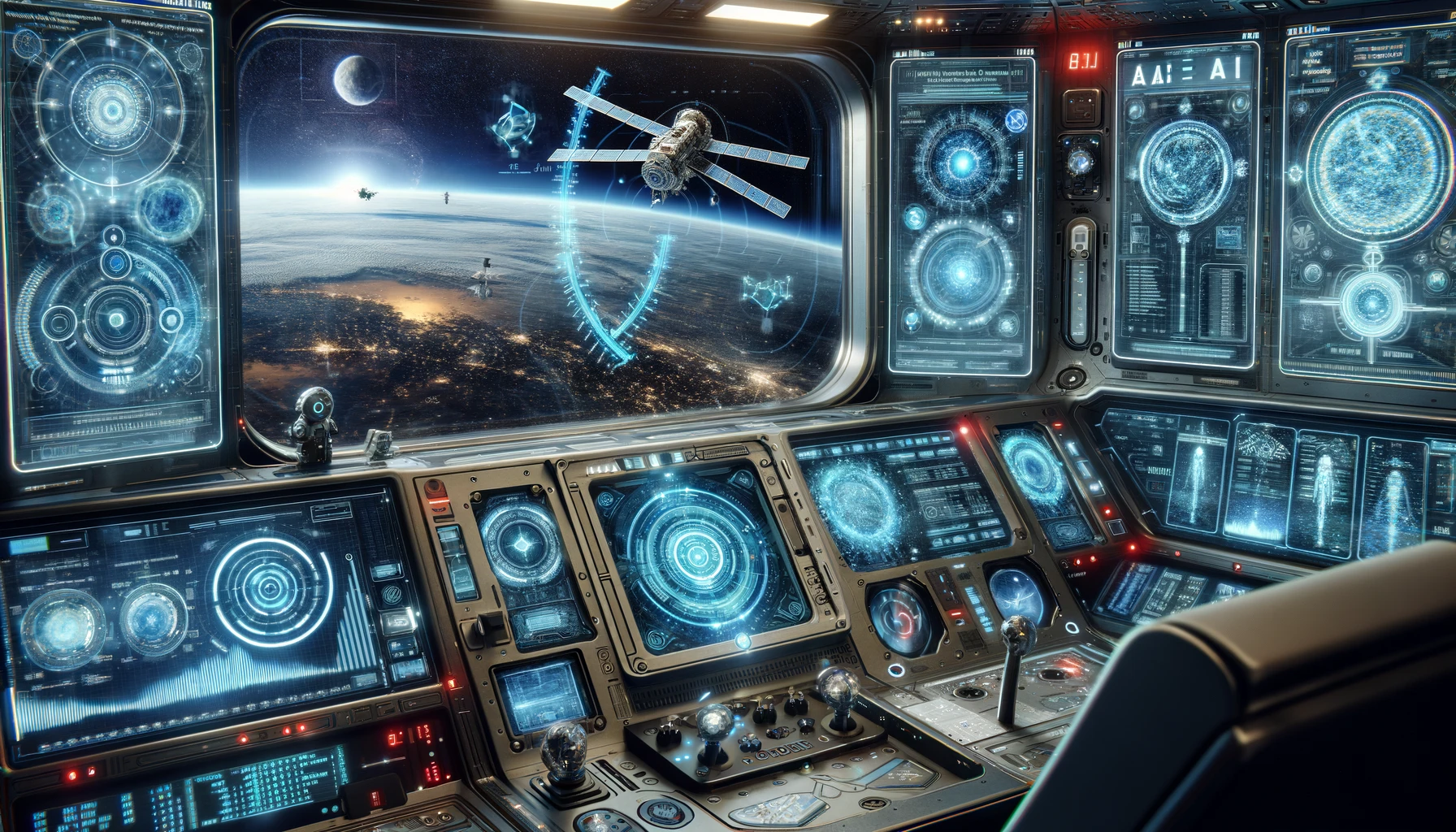
Our proprietary AI Guidance System represents a breakthrough in autonomous space navigation. Using advanced neural networks trained on millions of orbital scenarios, our system can predict debris trajectories with unprecedented accuracy, enabling precise navigation and identification of space debris.
This advanced system is designed to enable precise navigation through dense debris fields, ensuring the safety of our missions and the sustainability of outer space. By leveraging AI-powered guidance systems, we can improve our ability to maneuver and intercept debris while avoiding operational satellites.

Our advanced computer vision systems employ state-of-the-art object detection and classification algorithms to identify space debris in real-time. Using multi-spectral imaging and machine learning, we can detect and classify debris ranging from paint flecks to defunct satellites, creating a comprehensive map of the orbital environment.
The system utilizes deep learning neural networks trained on vast datasets of space imagery, enabling it to distinguish between operational assets and debris with exceptional accuracy. This technology is crucial for both mission safety and debris removal efficiency.
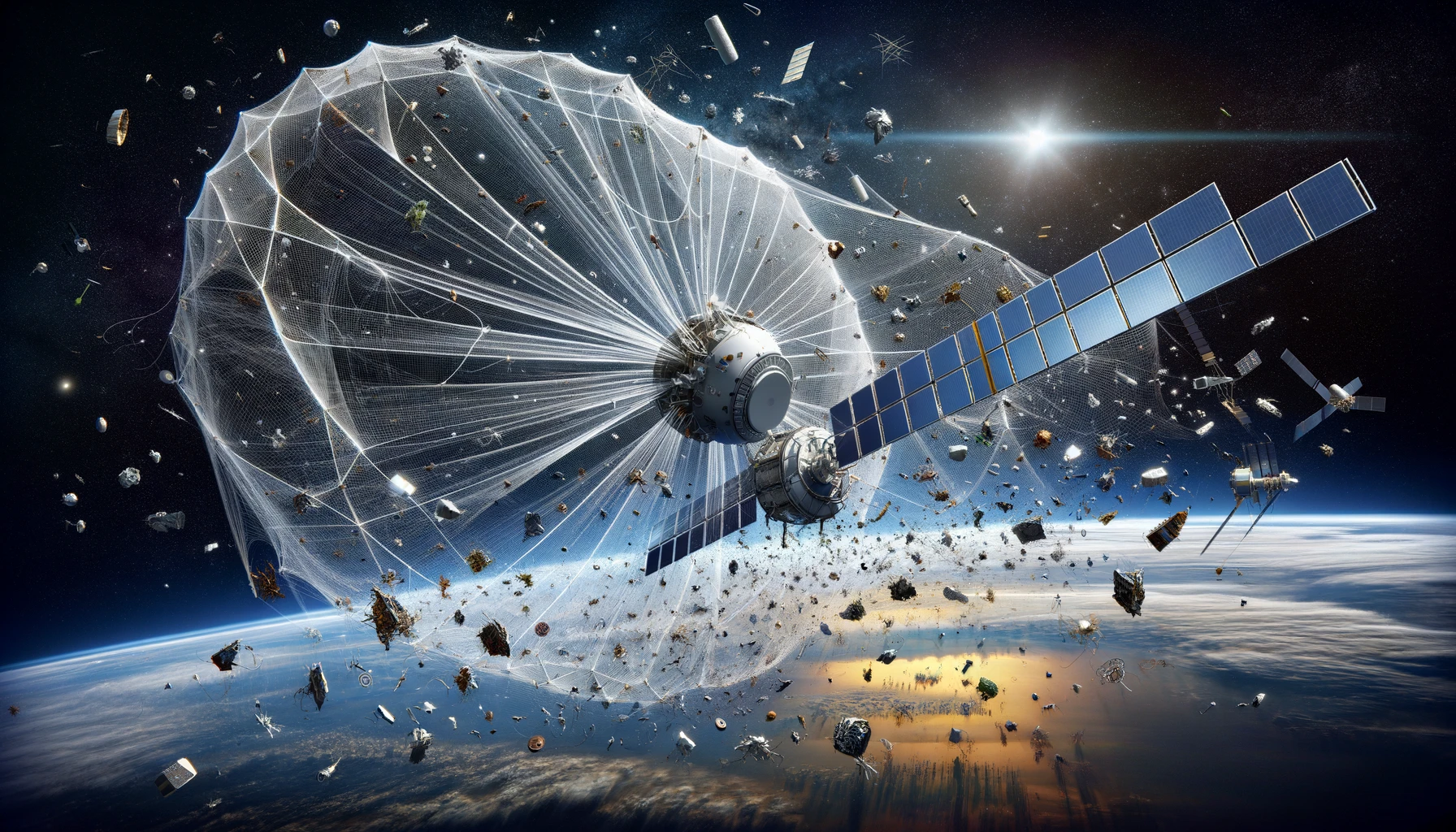
Inspired by nature's most effective capture mechanisms, our Fly Paper Webbing represents a revolutionary approach to debris capture. This deployable system uses advanced materials that remain flexible in the extreme temperatures of space while maintaining exceptional adhesive properties.
This novel technology represents a sophisticated approach to capturing space junk effectively, akin to a spider's web ensnaring its prey. It leverages advanced materials and adhesive properties to ensnare and immobilize debris in orbit, offering a non-destructive and efficient solution for grappling with space debris.
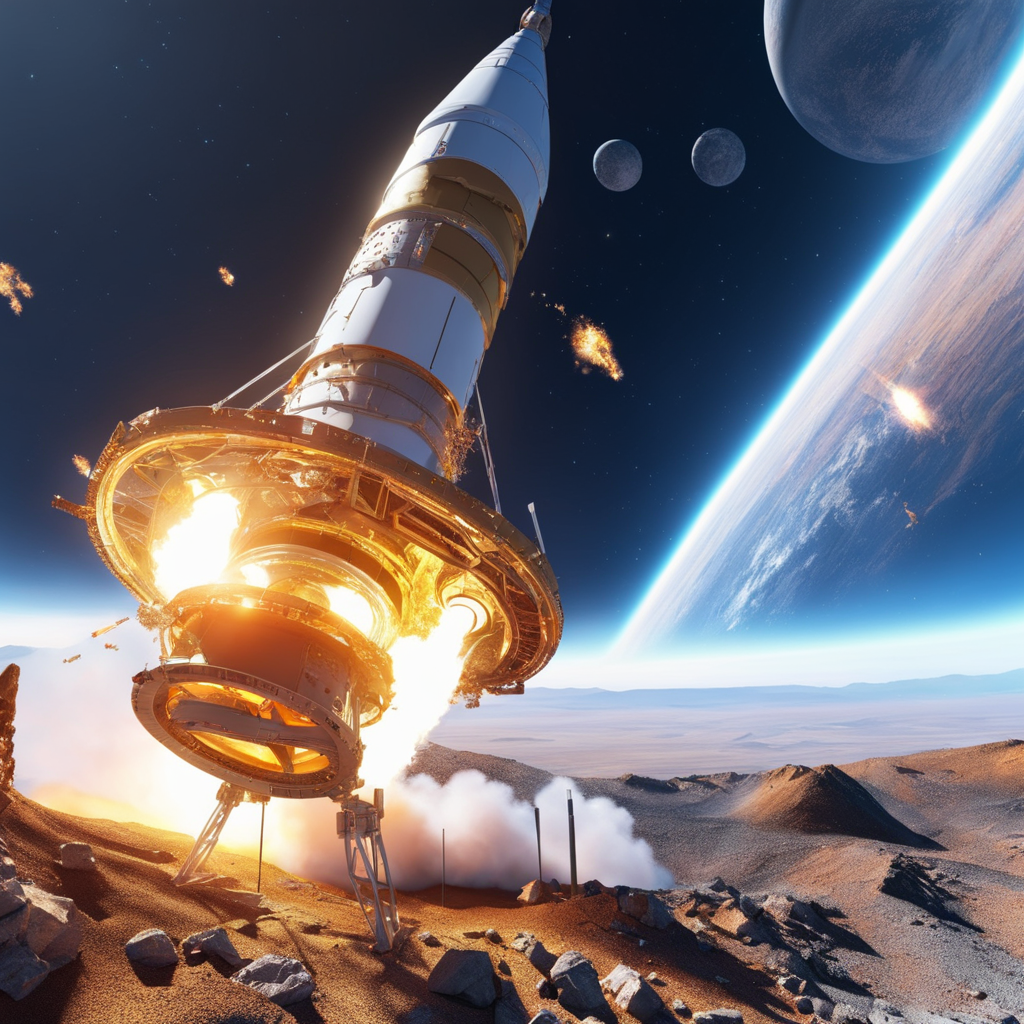
Our suite of de-orbiting technologies ensures safe and controlled removal of captured debris. From electrodynamic tethers to ion beam shepherding, we employ the most appropriate method for each debris type and orbital regime, maximizing efficiency while minimizing risk.
These sophisticated de-orbiting mechanisms are integral to the safe and efficient removal of debris from orbit. They encompass a diverse range of approaches, each presenting unique advantages and challenges, but all share the common goal of accelerating the deorbiting process while ensuring safety.
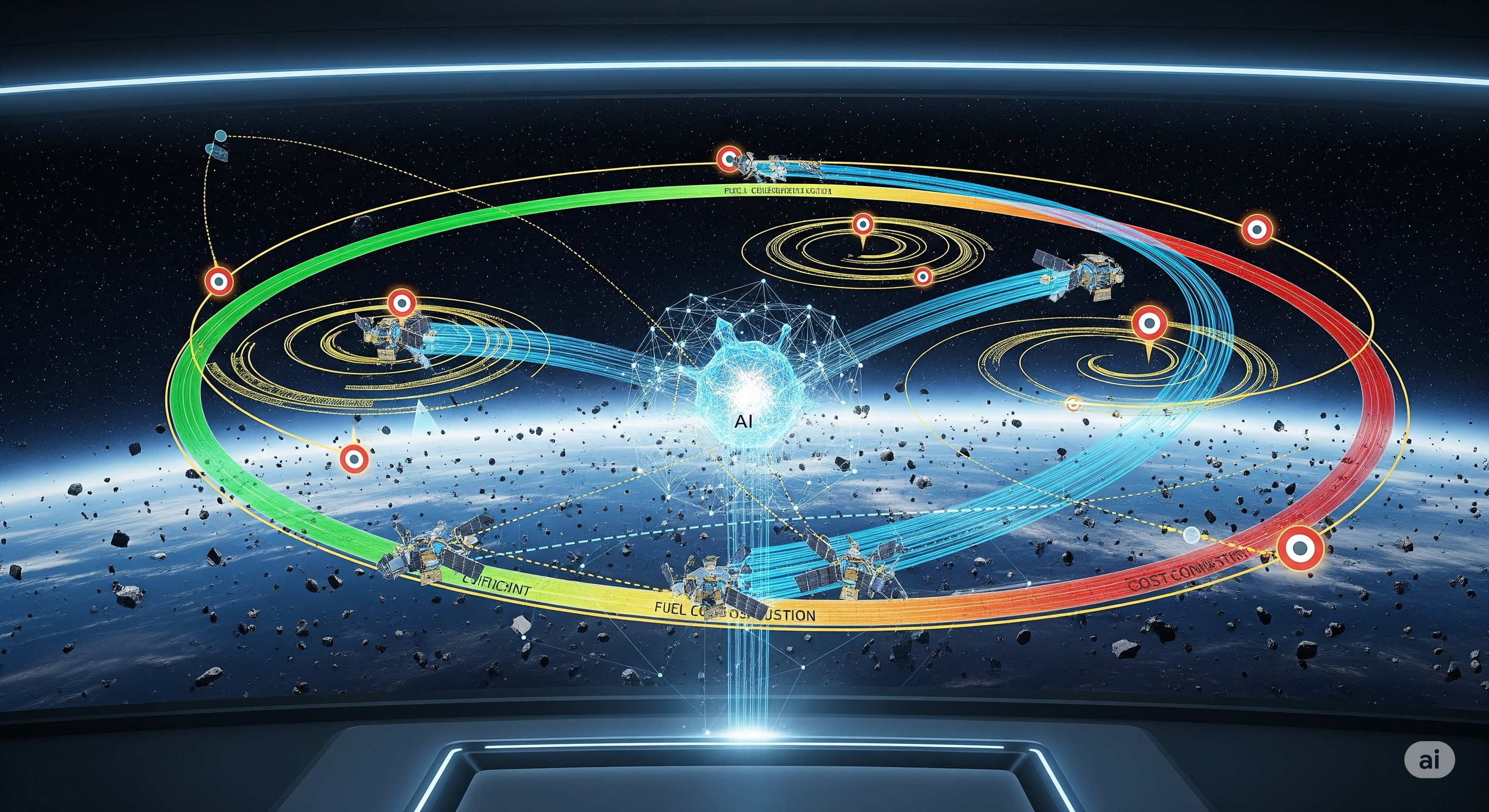
Our Trajectory Optimization AI leverages deep reinforcement learning to calculate the most fuel-efficient paths for debris intercept missions. This system continuously learns from each mission, improving its predictions and reducing operational costs while maximizing debris removal efficiency.
The system performs multi-objective optimization, balancing fuel consumption, mission duration, and safety margins to determine optimal intercept trajectories. It can coordinate multiple spacecraft operating as a swarm, enabling efficient removal of debris clusters.
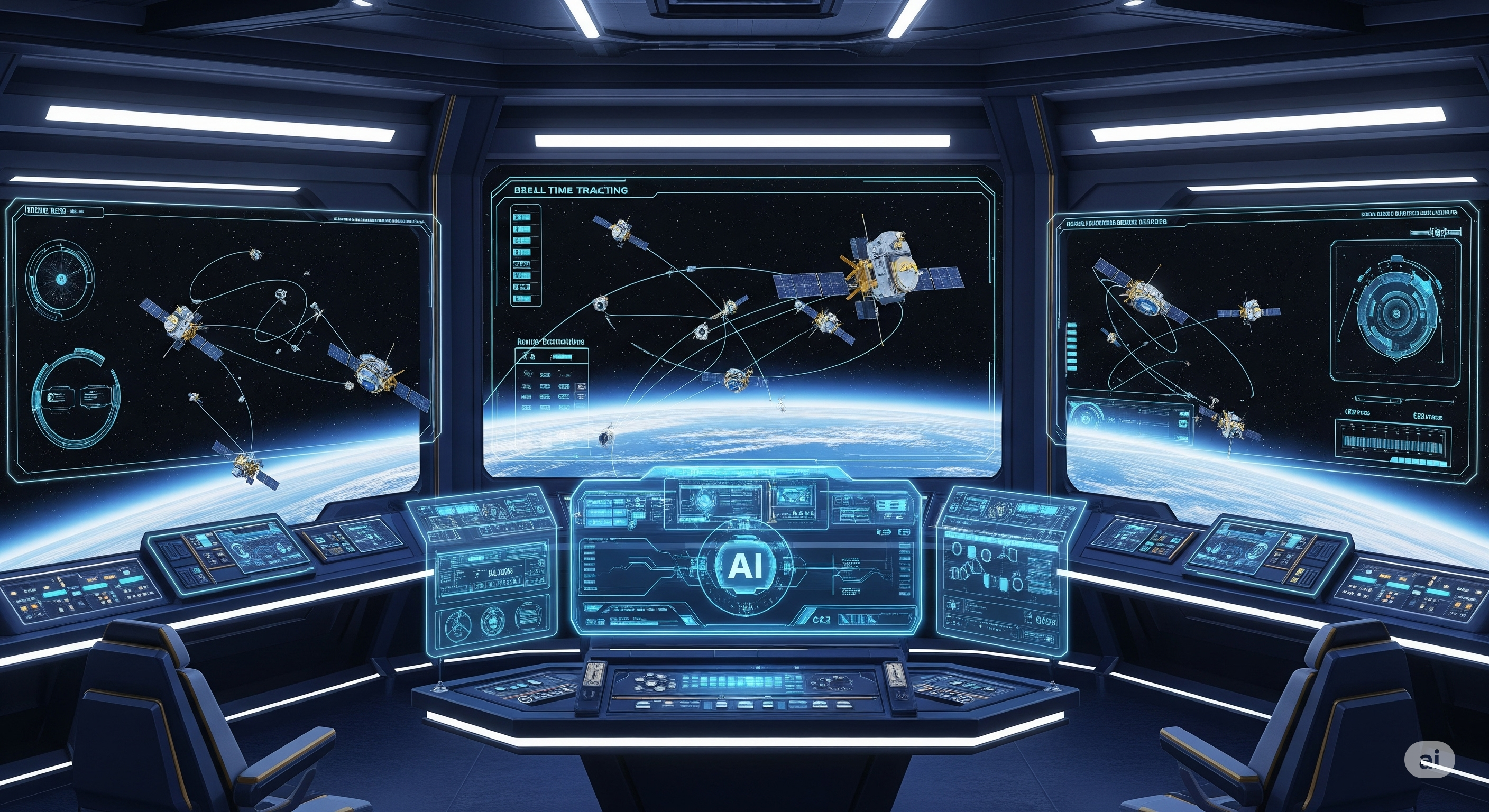
Our integrated approach combines all technologies into a cohesive debris removal ecosystem. Each component is designed to work seamlessly with others, creating a robust and efficient debris removal capability that can adapt to various scenarios and debris types.
By integrating AI guidance, computer vision, physical capture mechanisms, and de-orbiting technologies, we've created a comprehensive solution that addresses the full lifecycle of debris removal operations, from detection to safe disposal.
The urgency of addressing space debris cannot be overstated. Collisions with even small fragments of debris can have catastrophic consequences for operational satellites and spacecraft. The Kessler Syndrome—a cascade effect where collisions create more debris leading to more collisions—poses an existential threat to our continued use of space.
As a responsible participant in the exploration of outer space, we are committed to taking proactive measures to mitigate this threat. By developing and open-sourcing cutting-edge technologies like Fly Paper Webbing and advanced de-orbiting mechanisms, we are not only safeguarding our own assets but also contributing to the global effort to ensure the long-term sustainability of outer space for future generations.
Our commitment extends beyond technology development to active participation in international forums on space sustainability, collaboration with space agencies worldwide, and advocacy for responsible space operations. Together, through international collaboration and a commitment to innovation, we can address this pressing concern and chart a path toward a cleaner and safer orbital environment.
Partner with us to deploy cutting-edge debris removal technologies and ensure a sustainable future for space exploration.
Our technologies are available for licensing, joint ventures, and collaborative development programs.
Explore Partnership Opportunities